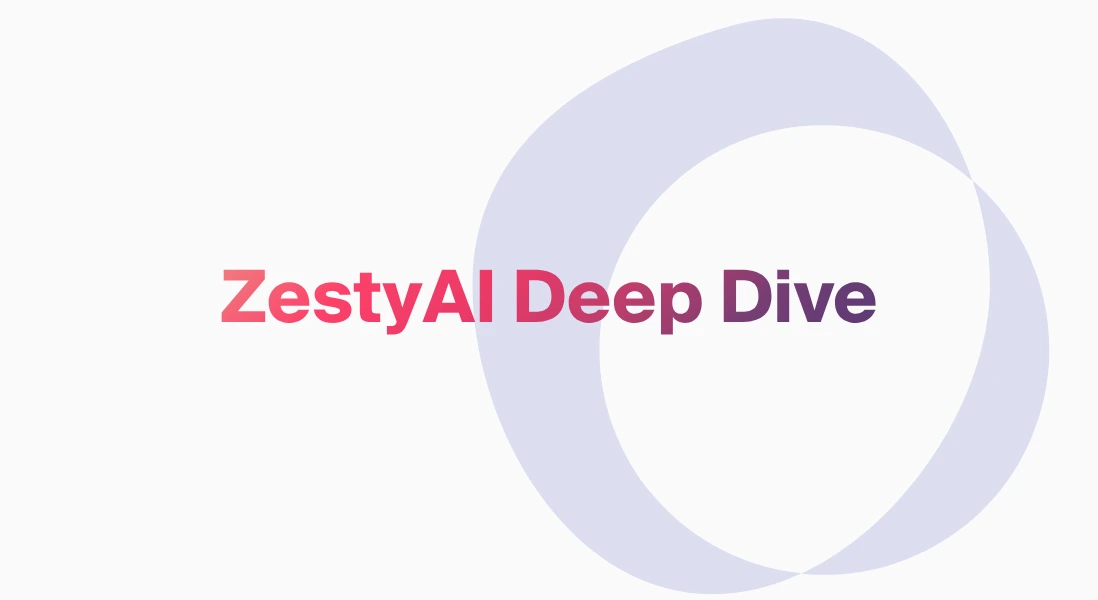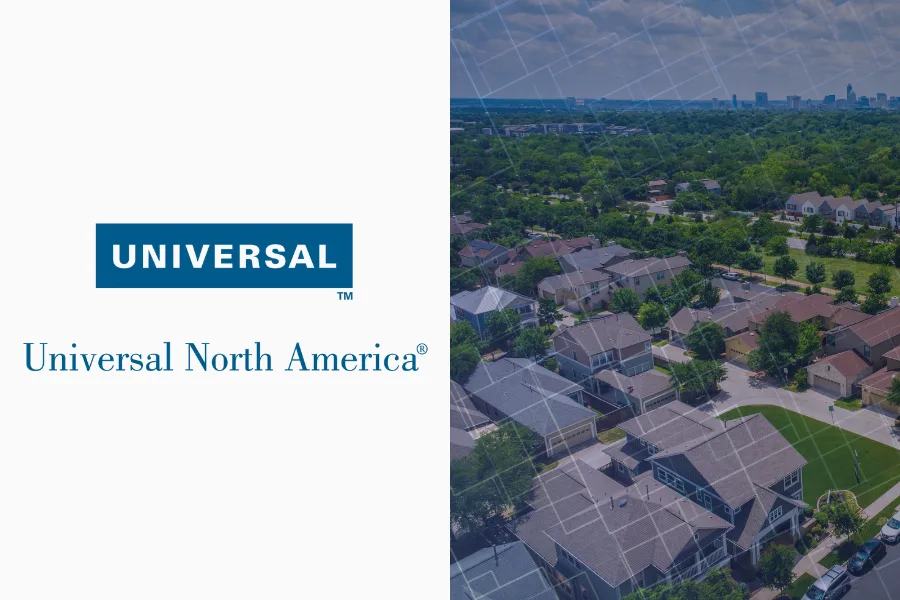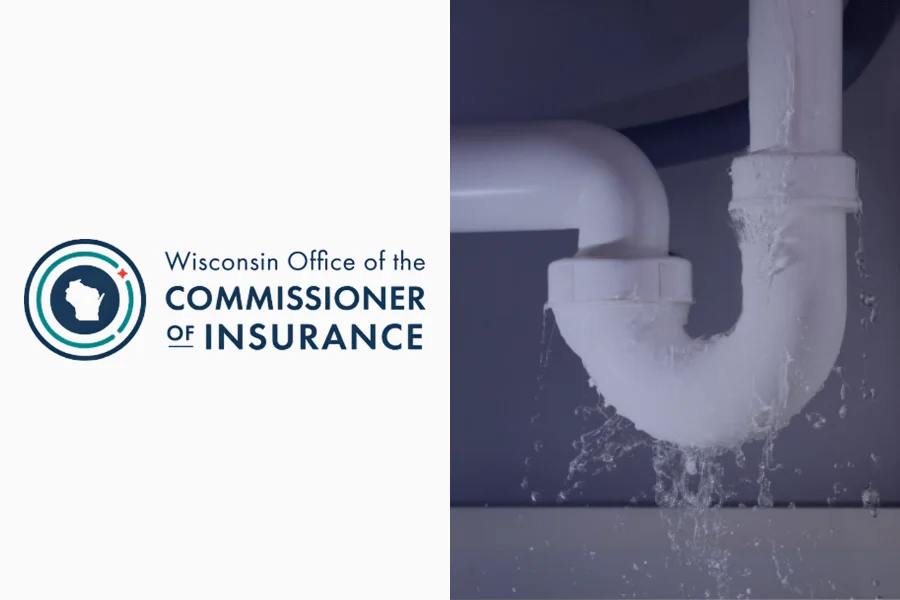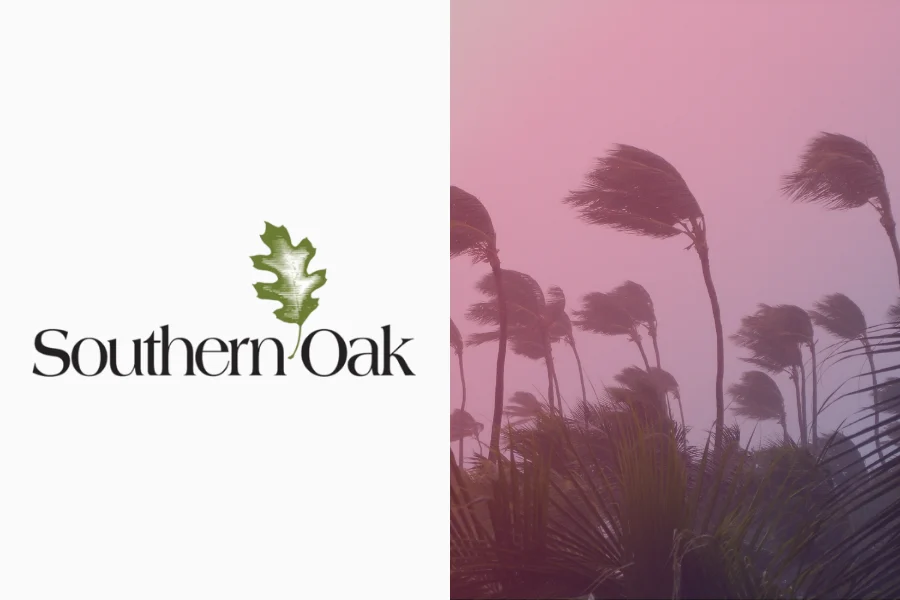Resources

How ZestyAI Models Work: A Deep Dive into Property-Level Risk
At ZestyAI, we’re often asked:
What Does “Property-Level” Mean?
What Makes ZestyAI Different from Traditional Risk Models?
Are ZestyAI Models Approved for Use in Underwriting and Rating?
This post answers the most common questions we receive from underwriters, actuaries, regulators, and technology partners—using wildfire, hail, wind, water, and storm perils as examples of how we turn complex data into actionable insights.
What Does “Property-Level” Mean?
Traditional risk models often rely on ZIP codes, territories, or broad regional averages to assess hazard and vulnerability. Stochastic models may support property-specific analysis, but they typically require external data sources, which adds cost, complexity, and inconsistency.
At ZestyAI, we assess each structure based on its physical characteristics and how it interacts with the surrounding environment.
We assess:
- Parcel boundaries and building footprints
- High-resolution aerial and oblique imagery
- Topography, slope, and vegetation
- Structural details like roof shape, materials, and defensible space
By integrating climatology with the built environment, we generate contextual risk scores that capture how each property’s physical characteristics, regional climatology, and historical loss experience interact to shape real-world risk.
That drives smarter decisions in underwriting, pricing, and mitigation, without relying on assumptions or manually sourced data.
What Makes ZestyAI Different from Traditional Risk Models?
Traditional risk tools often rely on:
- Broad hazard zones that can’t distinguish risk within a ZIP code
- Infrequent model updates that fail to reflect current conditions
- Over-simplified proxies—often relying solely on factors like year built—without accounting for deeper structural nuance
- Manual inspections that are slow, inconsistent, and costly
ZestyAI takes a fundamentally different approach.
Our models:
- Use gradient boosted machines that capture complex interactions between property features and environmental conditions
- Are trained on millions of actual insurance claims, not simulations, ensuring outputs reflect real-world loss experience
- Leverage both imagery (e.g., high-resolution aerial and oblique photos) and non-imagery sources (e.g., permits, climatology, topography)
- Continuously incorporate new data to reflect changing exposures
- Provide parcel-level risk scores with full transparency and regulator-ready documentation
With 97%+ U.S. property coverage, ZestyAI delivers national models with localized precision, helping carriers segment risk, price accurately, and respond to today’s evolving climate risks.
Are ZestyAI Models Approved for Use in Underwriting and Rating?
Yes. ZestyAI’s models, including Z-FIRE™, Z-HAIL™, Z-WIND™, Z-WATER™, and Z-STORM™, have been approved for use in underwriting and rating across the U.S.
Our regulatory approach is grounded in a few key principles:
- Transparency: We provide clear, regulator-ready documentation, including model methodology, variable selection rationale, and statistical validation.
- Collaboration: We work directly with carriers and state regulators throughout the filing process, from pre-submission briefings to objections.
- Responsible Innovation: Our models are trained on real-world claims, regularly updated with new data, and built with fairness and explainability in mind.
We support filings with:
- Detailed methodology and input documentation
- Variable importance rankings and validation studies
- Pre-built regulatory summaries to streamline the review
- Ongoing support throughout the regulatory lifecycle
ZestyAI has a track record of success navigating regulatory review. We help carriers adopt cutting-edge risk models with confidence and compliance.
Roof Age vs. Roof Condition: What’s the Difference?
ZestyAI’s models distinguish between roof age and roof condition, treating them as complementary signals that together provide a more accurate picture of roof-related risk, especially for hail and wind.
Roof Age is validated using a combination of building permit data and aerial imagery, analyzed through multiple proprietary methods simultaneously. We assign confidence scores to each roof age and apply minimum roof age rules to avoid false positives, ensuring the data is robust, even in jurisdictions with limited permitting records.
Roof Condition is assessed through computer vision models applied to high-resolution aerial imagery. These models detect visual signs of degradation, such as discoloration, wear, patching, and debris, that may not correlate with official replacement dates.
Why does this matter?
Because many insurers rely solely on reported roof age, which is often missing, outdated, or self-reported.
Our approach captures:
- Properties with older roofs that are still in good shape (and may be lower risk)
- Properties with newer roofs already showing signs of wear (and may be higher risk)
- Up-to-date roof vulnerability that static datasets can’t match
Together, roof age and condition power smarter decisions in underwriting, pricing, and mitigation—grounded in observable reality, not assumptions.
Modeling Approach: Why Gradient-Boosted Machines (GBMs)?
ZestyAI's risk models use gradient boosted machines (GBMs), a machine learning technique that delivers powerful predictive performance while remaining transparent and regulator-ready.
We use GBMs because they:
- Achieve high predictive accuracy by combining many simple decision trees into an ensemble that learns from its own errors over time, ideal for capturing complex insurance risk signals.
- Model non-linear interactions between variables, such as how roof complexity, condition, and regional climatology jointly influence risk, something traditional models or GLMs often miss.
- Enable transparency and explainability, with tools like feature importance rankings, partial dependence plots, and SHAP values that help underwriters, actuaries, and regulators understand what’s driving risk scores.
- Support a wide range of input types, from imagery-derived features to structured data like permits, topography, and property characteristics, all in one unified framework.
The result: a modeling approach that delivers real-world impact, supporting smarter underwriting, better pricing, and confident regulatory adoption.
How Z-FIRE Evaluates Wildfire Risk
Z-FIRE is ZestyAI’s structure-level wildfire risk model, built to capture both traditional wildland fire exposure and the growing threat of urban conflagration. Unlike traditional hazard maps that apply uniform risk zones across ZIP codes or counties, Z-FIRE delivers granular, property-specific risk scores for every structure in the U.S.
The model includes two levels of scoring:
- Level One: Exposure Risk – Evaluates how likely a structure is to fall within a future wildfire perimeter, based on vegetation, slope, elevation, proximity to the wildland-urban interface (WUI), historical burn patterns, and regional climatology.
- Level Two: Structure Vulnerability – Assesses how likely that structure is to be damaged if a wildfire occurs nearby. This score factors in structural characteristics like building materials, defensible space, and surrounding fuels, extracted from aerial imagery using computer vision.
Together, these scores provide a more complete view of wildfire risk: not just where fires may happen, but how individual structures are likely to perform.
Z-FIRE also captures non-traditional wildfire scenarios, including embers and wind-driven fires that jump the WUI and ignite dense suburban and urban neighborhoods. This makes the model particularly valuable for identifying concentration risk, urban conflagration, and managing PML across books of business.
Z-FIRE is validated on millions of insurance claims and performs reliably across all geographies—from the forests of California and the grasslands of Texas to emerging risk zones in Colorado, Oregon, and the Eastern U.S.
How Z-HAIL Accounts for Roof Vulnerability
Z-HAIL is a property-specific hail risk model designed to assess not just the likelihood of hail, but how damaging it will be to a specific structure.
Unlike traditional models that rely on historical hail frequency alone, Z-HAIL captures the interaction between local climatology and structural resilience by analyzing:
- Hail climatology: storm frequency, hailstone size, and intensity at a hyperlocal level
- Roof geometry and materials: pitch, complexity, covering type, and other features that influence how hail impacts a roof
- Property-specific vulnerability factors: including building height, exposure, and roof condition (derived from imagery and computer vision)
By modeling how hail behaves in a given location and how a specific roof is likely to perform under those conditions, Z-HAIL delivers precise risk segmentation at the parcel level.
Carriers using Z-HAIL have seen significant improvements in underwriting performance. In an independent third-party review, Z-HAIL demonstrated a 20× lift in loss ratio segmentation between high- and low-risk properties—enabling more accurate pricing, better risk selection, and actionable mitigation strategies.
How Z-WIND Analyzes Wind-Driven Damage
Z-WIND is a property-specific model that evaluates vulnerability to both straight-line winds and tornadic activity by analyzing how wind climatology interacts with structure-level characteristics.
The model captures:
- Roof geometry: including shape, pitch, and surface area, which influence uplift forces
- Building elevation: to assess exposure to wind at various heights
- Local terrain and land cover: which impact wind speed, turbulence, and exposure to flying debris
- Historical wind climatology: including storm frequency and intensity
- Real-world claims data: to ensure outputs reflect actual loss performance
Z-WIND generates property-level frequency and severity scores, helping insurers move beyond broad wind zones to more precisely identify risk at the structure level. By understanding how specific buildings respond to local wind conditions, Z-WIND enables more accurate pricing, underwriting, and mitigation strategies across both inland and coastal regions.
How Z-WATER Tackles Non-Weather Water Losses
Z-WATER is an AI-powered model that predicts the frequency and severity of non-weather water and freeze claims at the property level, covering every structure in the contiguous U.S.
While many traditional models depend heavily on basic indicators such as “year built,” Z-WATER combines those inputs with a broader set of property, climate, and infrastructure features to capture the interaction between three core dimensions of risk:
- Construction & Architecture: Property-specific features that influence vulnerability and claim severity, such as number of bathrooms, number of stories, presence of a pool, and overhanging vegetation (a signal for potential tree root intrusion).
- Climatology: Environmental stressors like temperature swings and freeze/thaw cycles that contribute to pipe bursts and system strain.
- Local Infrastructure & Hydrology: How local plumbing systems and electrical grids perform when real-world cold snaps or heat waves exceed what regional codes anticipated, exposing systemic weak points that lead to burst pipes and interior water damage.
These variables are derived from aerial imagery, tax assessment data, and regional climate and infrastructure datasets, all processed through ZestyAI’s proprietary AI framework.
Z-WATER helps insurers:
- Set fair and adequate rates based on true exposure
- Target high-risk homes for mitigation (e.g., water sensors or shutoff valves)
- Streamline operations by automating low-risk decisions and focusing resources where they matter most
What Is Z-STORM?
Z-STORM is a predictive, property-specific model built for carriers that rate hail and wind as a combined peril. It provides structure-level risk scores across the contiguous U.S., enabling more accurate pricing, underwriting, and mitigation decisions.
Unlike traditional territory-based approaches, Z-STORM models how storm climatology interacts with the built environment—capturing the real-world conditions that drive loss at the individual property level.
The model incorporates:
- Storm climatology: frequency and severity of wind and hail events at a hyperlocal scale
- Structural features: roof shape, material, pitch, and condition—key factors in a structure’s vulnerability
- Environmental context: including open terrain and nearby vegetation, which can amplify damage
Z-STORM predicts both:
- Claim frequency: the likelihood a property will experience a storm-related claim
- Claim severity: the expected loss as a percentage of Coverage A, providing a more precise view of financial exposure
This dual prediction enables carriers to:
- Accurately rate combined wind and hail risk at the property level
- Target mitigation strategies (e.g., roof improvements that reduce exposure to both hazards)
- Improve risk segmentation and pricing
Z-STORM offers a single, AI-powered solution for capturing the true complexity of convective storm risk—from climate data to construction detail to expected loss outcome.
.webp)
California Casualty Selects Z-FIRE™ to Support California’s Sustainable Insurance Future
AI-driven wildfire analytics enhance underwriting precision and ensure mitigation efforts are reflected in coverage
ZestyAI announced today a new partnership with California Casualty, a trusted auto and home insurance provider serving educators, police officers, firefighters, and healthcare workers for over 110 years.
The collaboration will enhance California Casualty’s wildfire underwriting and pricing capabilities while reinforcing its long-term commitment to serving California’s community heroes and supporting the California Department of Insurance’s Sustainable Insurance Strategy (SIS).
Enhancing Accuracy, Supporting Affordability
California Casualty will deploy ZestyAI’s Z-FIRE™ model and Wildfire Mitigation Pre-Fill to better align premiums with property-specific wildfire risk and recognize homeowners’ efforts to mitigate that risk.
These advanced models analyze each property’s vulnerability based on factors such as topography, vegetation, building materials, defensible space, and the characteristics of the built environment.
Unlike traditional models that stop at the wildland-urban interface, Z-FIRE accounts for the dynamics of urban conflagration, where fire spreads rapidly from structure to structure in densely built neighborhoods. Wildfire Mitigation Pre-Fill complements this by automatically surfacing mitigation features at scale, bringing greater accuracy and transparency to underwriting.
Todd Brickel, Senior Vice President, Chief Risk & Product Officer at California Casualty, said:
“As wildfire threats intensify, our responsibility is to ensure that educators, peace officers, firefighters, and healthcare professionals continue to have access to reliable and affordable coverage."
"Partnering with ZestyAI equips us with data-driven insights needed to price risk accurately, reward mitigation, and sustain our role as a long-term solution in California’s insurance market.”
Commitment to California
California Casualty has long stood with California’s community heroes, protecting their homes in both city neighborhoods and wildfire-exposed areas. Even as other insurers have reduced their footprint, California Casualty continues to expand access to coverage in support of Commissioner Ricardo Lara’s Sustainable Insurance Strategy.
Through its investment in advanced wildfire analytics, the company is ensuring that affordability and availability can coexist in California’s evolving insurance landscape.
The strength of Z-FIRE’s analytics was reaffirmed during the 2025 Los Angeles wildfires, when the Palisades and Eaton fires escalated into fast-moving urban conflagrations.
The model’s performance reinforced how advanced analytics can anticipate where fire risk is greatest and help insurers strengthen preparedness and resilience well before events occur.
These insights enable California Casualty to maintain confidence in providing coverage for community heroes throughout California’s most challenging environments.
Attila Toth, CEO of ZestyAI, said:
“We are proud to partner with California Casualty, a company that has served community heroes for more than a century.”
“Our AI-driven models provide the transparency, accuracy, and property-level detail needed for insurers to remain confident in challenging markets, rewarding mitigation efforts and supporting regulatory goals for long-term stability.”
Built and validated on more than 2,000 historical wildfire events and two decades of claims data, Z-FIRE has been widely adopted by insurers across the West and recognized by regulators for use in both underwriting and rating.

Universal North America Insurance Company Adopts ZestyAI’s Roof Age Solution
Partnership brings AI-powered verified roof age to strengthen risk decisions and portfolio performance
ZestyAI, the leading provider of AI-powered property and climate risk analytics, today announced that Universal North America Insurance Company, a property insurer, part of the One Alliance Group of companies, has adopted ZestyAI’s Roof Age solution to bring greater accuracy and confidence to property risk assessment across its portfolio.
Why Accurate Roof Age Data Matters
Roof-related claims are among the costliest in property insurance. Yet insurers have long struggled with inconsistent or incomplete roof age data. ZestyAI’s analysis shows that nearly one in three roofs are at least five years older than recorded in policy data, creating blind spots that drive higher losses and mispriced policies.
How ZestyAI’s Roof Age Model Works
ZestyAI’s Roof Age solution closes this gap by synthesizing building permit data with two decades of high-resolution aerial imagery, applying advanced machine learning to deliver verified roof age estimates with 97% U.S. coverage.
Strengthening Portfolio Performance
"Accurate roof data is foundational for managing one of the costliest drivers of property insurance losses,” said Miguel Barrales, President of Universal North America Insurance Company. “ZestyAI’s Roof Age solution provides the reliability we need to make more confident risk decisions and strengthen portfolio performance.”
"For years, insurers have had to make critical decisions without reliable roof data, and the cost has been enormous,” said Attila Toth, Founder and CEO of ZestyAI. “Universal North America Insurance Company’s adoption shows what’s possible when carriers embrace trusted, property-level insights to strengthen their portfolios and the market as a whole.”

ZestyAI Secures Regulatory Approval for Z-WATER™ in Wisconsin
AI-powered model addresses the #1 driver of non-catastrophic property losses, non-weather water
ZestyAI, the leading provider of AI-powered property and climate risk analytics, today announced that its non-weather water risk model, Z-WATER™, has received approval in Wisconsin for use in underwriting and rating.
Why Non-Weather Water Losses Are Rising
Non-weather water is one of the costliest and fastest-growing perils in homeowners insurance, now ranking as the fourth costliest peril overall, with claim severity up 80% over the past decade—surpassing hurricanes. These losses stem from everyday risks like burst pipes, appliance failures, and plumbing leaks. With average claim costs now exceeding $13,000, their financial impact rivals catastrophe events.
How the Z-WATER Model Works
Z-WATER is built, tested, and validated with real insurer loss data, ensuring accuracy and regulatory credibility. The model uses computer vision to analyze aerial imagery alongside tax assessor data, permit records, climatology science, and infrastructure insights to assess key property-level risk factors. By modeling how these variables interact, Z-WATER predicts both the frequency and severity of non-weather water claims with up to 18x greater accuracy than traditional models.
What This Approval Enables for Insurers
With this approval, insurers in Wisconsin can begin using Z-WATER to:
- Set more accurate, property-specific rates
- Align coverage with actual home vulnerabilities
- Optimize inspections and mitigation strategies, such as the adoption of water sensors
- Reduce cross-subsidization and improve portfolio performance
Regulatory Confidence in Explainable AI
“Non-weather water is one of the most frequent and expensive sources of loss for insurers, and it behaves differently than other perils,” said Bryan Rehor, Director of Regulatory Strategy at ZestyAI.
“Z-WATER captures the property-level features that truly drive risk—such as plumbing systems, home design, and even vegetation patterns, giving insurers a much clearer picture of where losses are likely to occur.
"This approval demonstrates that regulators recognize the value of AI models that are explainable, data-driven, and validated against real claims," he added.
Part of a Growing Nationwide Regulatory Track Record
This approval adds to ZestyAI’s growing regulatory momentum. Across five perils, including wildfire, hail, wind, storm, and now non-weather water, ZestyAI has secured more than 70 approvals coast-to-coast.
In addition to these peril models, ZestyAI’s Z-PROPERTY™ solution has also earned nationwide approvals, giving insurers trusted roof and parcel-level insights with the same regulatory credibility.

Southern Oak Deploys ZestyAI’s Risk Platform to Improve Risk Visibility and Reduce Losses in Florida
Granular insights into roof and parcel-level risk help reduce storm losses and strengthen portfolio performance across Florida’s high-risk market
Southern Oak Insurance Company, a Florida-based insurer specializing in personal residential property coverage, has adopted ZestyAI’s AI-powered property risk platform to improve visibility into property condition and exposure across its homeowners portfolio.
By analyzing structural and environmental vulnerabilities, such as roof degradation, overhanging vegetation, yard debris, and secondary structures, ZestyAI’s platform equips Southern Oak to take targeted actions that help reduce losses and manage exposure more effectively. These granular, property-level insights also offer a clearer view of changing risk conditions across one of the most challenging insurance markets in the country.
Southern Oak is leveraging two core capabilities within ZestyAI’s Z-PROPERTY solution:
- Digital Roof applies AI to high-resolution aerial imagery to assess roof complexity, materials, and condition, flagging structural vulnerabilities before they become claims.
- Location Insights evaluates the broader parcel to surface risk factors such as vegetation overhang, yard debris, and secondary structures that can amplify storm losses or drive claim severity.
“ZestyAI stood out for its ability to provide deep, 3D visibility into the condition and complexity of the properties we insure.”
“ZestyAI stood out for its ability to provide deep, 3D visibility into the condition and complexity of the properties we insure,” said Tony Loughman, CEO of Southern Oak Insurance Company. “These insights help us improve our risk decisions and manage exposure more effectively across a high-risk geography, while continuing to deliver value and stability to our policyholders.”
“Southern Oak is taking a proactive, data-driven approach to strengthen portfolio decisions,” said Attila Toth, Founder and CEO of ZestyAI. “In Florida’s uniquely challenging insurance market, resilience depends on seeing risk clearly at the property level—and acting on it.”

Mitigation Aware Scoring for Severe Convective Storm Risk
Changes such as upgrading or replacing roofs and addressing structural deficiencies will automatically influence risk scores
ZestyAI today announced a new enhancement to its Severe Convective Storm (SCS) risk suite that enables carriers to adjust model inputs and risk scores based on mitigation efforts.
The enhancement gives insurers a structured and scalable way to reflect real-world improvements, such as upgrading roof materials, replacing aging roofs, or addressing structural deficiencies, directly within property-level risk assessments.
What the New Capability Enables
Carriers can now instantly update risk scores based on verified property data, enabling three key use cases:
- Reflecting completed mitigation: Recognize risk-reducing actions like roof upgrades or structural improvements in real time, improving rating accuracy and customer satisfaction.
- Correcting inaccurate data: If errors are identified, such as incorrect roof material, carriers can transparently correct inputs to ensure fairer, more accurate risk assessments.
- Simulating future changes: Carriers can model the potential impact of proposed upgrades before they occur, helping agents and homeowners understand the value of mitigation and reinforcing behavior that reduces future losses.
Why It Matters for Carriers and Policyholders
Kumar Dhuvur, Co-Founder and Chief Product Officer of ZestyAI, said:
“Models should be powerful, but also flexible and responsive to real-world improvements.”
“By giving carriers the ability to incorporate mitigation and field data into model outputs, we’re supporting transparent, action-oriented risk management that benefits both insurers and homeowners.”
This mitigation-aware functionality is already in use across ZestyAI’s wildfire products, including Z-FIRE™ and Compliance Pre-Fill, where it supports critical regulatory filings and enables carriers to reflect mitigation actions like defensible space and Class A roofs. Extending this capability to the SCS suite ensures a consistent, carrier-controlled approach to incorporating verified improvements across perils.
Built for Transparency and Human-in-the-Loop Decisioning
This enhancement reflects ZestyAI’s broader commitment to human-in-the-loop AI, where insurers remain in control of key decisions and have visibility into the data behind every score.
By combining transparency with the ability to incorporate verified updates, ZestyAI helps carriers build trust with both regulators and policyholders while ensuring model outputs remain grounded in real-world conditions.
The score adjustment capability is seamlessly integrated into the ZestyAI platform and supports a wide range of use cases, including improving product fit, optimizing inspection workflows, enhancing underwriting decisions, and ensuring rating accuracy.
The Z-HAIL™, Z-WIND™, and Z-STORM™ models are built on real-world claims data and leverage property-specific features such as roof geometry, condition, and vegetation to deliver more accurate risk insights than traditional territory-based models.
ZestyAI’s storm models are approved for use in over 20 states across the Great Plains, Midwest, and U.S. South, regions most impacted by severe convective storms, and are actively used by carriers for rating and underwriting.
Ready to see how ZestyAI works on your book of business?
Tell us a little about your needs. We'll show you how we reduce losses and help you price with precision.








